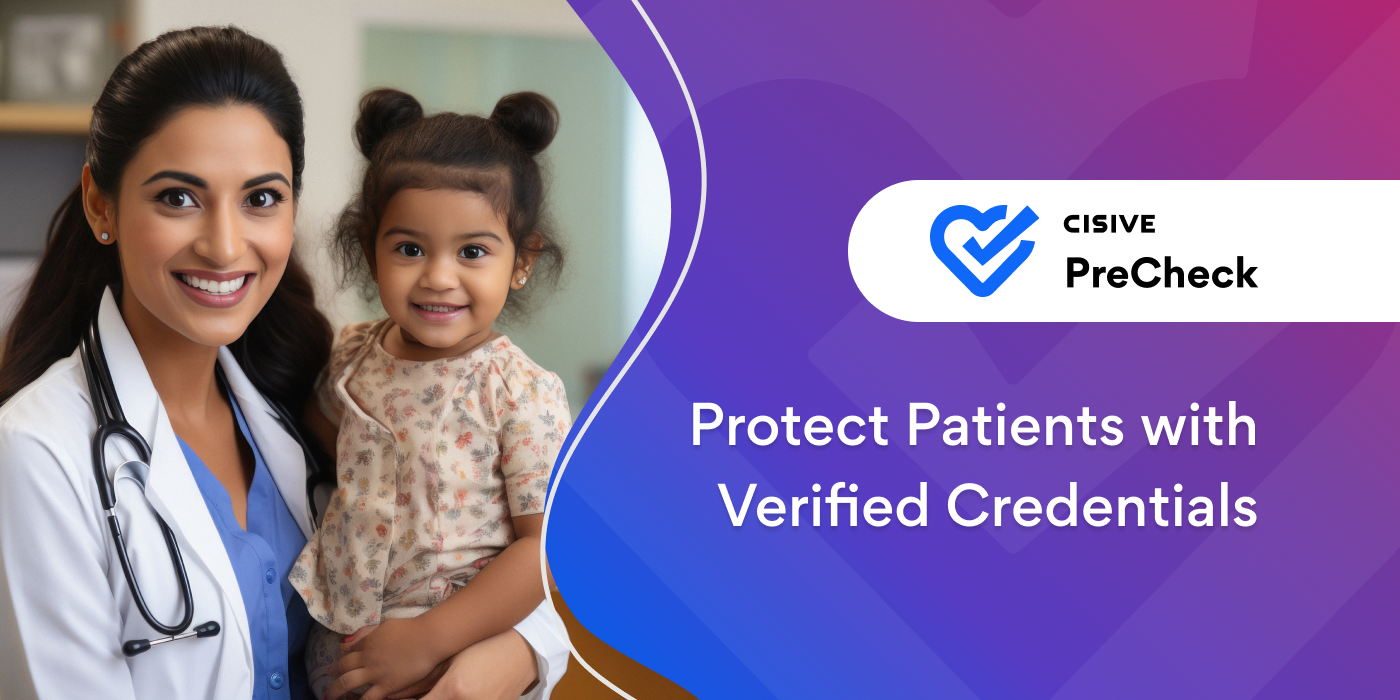

Hiring for home-based care isn’t like staffing a hospital floor or an outpatient clinic. When a...

As a Medical Staff Professional, you know how important it is to vet providers thoroughly. After all, nurses, physicians, and other licensed professionals have direct contact with vulnerable patients.
Unfortunately, manual credentialing processes are extremely time-consuming, leaving medical staff services teams scrambling to keep up with the workload. Learn how a provider credentialing service can help you meet your obligations while lowering your costs.
Key TakeawaysHere are the key things you need to know about healthcare credentialing:
|
Healthcare credentialing is the process of verifying a provider's qualifications. You should complete this process for every licensed professional who has direct contact with patients, including physicians, nurse practitioners, physical therapists, and registered nurses.
Credentialing is an important part of the hiring process because it helps you verify that a provider has the right qualifications for the job. If you're hiring a physician, for example, you need to know that the person you hire has completed their residency and passed their USMLE exams.
A strong credentialing process also limits your liability in the event of a lawsuit, as it demonstrates that you met your duty to vet each provider before allowing them to deliver healthcare services.
Proper credentialing may even save your facility money. If you notice any discrepancies during the credentialing process, you can avoid privileging the individual, reducing the potential costs associated with potential litigation in the future.
Credentialing is an important part of reputation management for hospitals, clinics, and other medical facilities. Comprehensive credentialing improves your facility's reputation by showing patients and other stakeholders that you care about their well-being.
Healthcare credentialing may also help you improve the quality of your workforce, making it easier to qualify for national accreditations or quality awards. These awards and accreditations go a long way toward improving your facility's reputation.
During the credentialing process, you verify that a provider has the requisite education, skills, and certifications to provide patient care. As a result, credentialing enhances safety and improves overall patient outcomes, as it prevents unqualified individuals from coming into contact with your patients.
Healthcare organizations typically follow a well-defined process for credentialing. The exact process varies based on your needs, but it usually includes verifying a provider's education, degrees, and professional licenses.
Background checks are also an important part of provider credentialing, especially if your facility receives payment by Medicare, Medicaid, or other government-funded programs.
The credentialing process typically involves the following steps:
To complete the credentialing process, you need a variety of documents. Some documents, such as driver's licenses and passports, make it easier to verify a candidate's identity. You'll also need a Social Security card to confirm that a candidate is authorized to work in the United States.
You may also need the following:
|
|
The exact requirements depend on which position you're trying to fill. For example, registered nurses don't have prescribing privileges, so you wouldn't ask a nurse to provide a DEA number.
Several qualifications require verification. If the candidate claims to have two degrees from different universities, you'll need to verify both credentials.
You also need to verify a candidate's professional licenses and board certifications. This involves checking to make sure each credential is in good standing.
If you're hiring physicians, it's critical to verify that each candidate has completed an appropriate residency. For example, neurosurgeons must complete a 7-year residency, while neurologists, dermatologists, and family physicians only have to complete 3 years of residency training.
It's critical to verify that a candidate has passed all required licensure examinations. Some states have a limit on the number of attempts allowed for the USMLE and/or COMLEX exams, but credentialing can help you determine if this limit is an issue for any of your prospective employees.
Healthcare credentialing is unique because it goes far beyond a cursory background check. As part of the credentialing process, you have to verify a candidate's education, training, certifications, licenses, and professional registrations.
Additionally, you must verify a provider's credentials at regular intervals. In most industries, employers don't have to perform ongoing credential checks.
Re-appointment typically occurs every 2-3 years. It depends on the requirements in your state, and your organization’s policies.
PreCheck offers continuous monitoring solutions, making it easier to comply with your state's credentialing requirements.
Inadequate provider screening puts your organization at risk of lawsuits, as you have a duty to ensure that no unqualified individual has an opportunity to provide services to your patients.
Provider credentialing reduces liability risks by helping you verify that a candidate has the right credentials for the job. As a result, a strong credentialing process prevents inexperienced or unlicensed individuals from coming into contact with your patients.
Healthcare credentialing complements standard background checks by making it easier to identify discrepancies. For example, a background check may not reveal that a candidate's medical license is suspended for 3 years, but a suspended license will show up when you perform the license-verification step of your credentialing process.
Credentialing also helps you uncover relevant sanctions and exclusions, which may prohibit a provider from participating in federal health programs. Overall, credentialing goes beyond a basic background check, helping you avoid the problems that arise when you hire someone who doesn't have the right credentials.
As noted previously, verifying a provider's credentials has several benefits for healthcare facilities and patients. In some cases, credentialing keeps unqualified individuals from ordering tests, performing procedures, or making medical decisions that could bring harm to one of your patients.
When accompanied by a thorough background check, credentialing also reduces the risk that you'll hire someone with a history of abuse or neglect.
The exact timeline depends on the candidate, the job opening, and your organization's internal processes. For example, if you use manual verification tools, it may take several months to complete the credentialing process for a prospective provider.
If you use automated tools or rely on a credential verification service, it may take as little as a few weeks.
Manual verification is the most time-consuming way to confirm that a candidate meets your hiring criteria. Using a verification service like PreCheck by Cisive is a great way to reduce credentialing costs, meet your compliance obligations, and complete the process in as little time as possible.
PreCheck isn't just another background check service — it's a complete healthcare screening solution. The PreCheck platform offers credentialing, background checks, license monitoring, immunization tracking, and other features, ensuring every hire meets your rigorous requirements.
PreCheck allows you to integrate your credentialing software to its trusted screening solutions, eliminating time-consuming manual processes. Rather than doing basic background checks, we use several primary sources to verify the information provided by each candidate.
For example, we can gather information from the American Medical Association (AMA) and American Board of Medical Specialties (ABMS) profiles. We even offer sanctions and exclusion screening to protect your reimbursements.
Our background checks are extremely comprehensive, as they include state and county criminal records, federal criminal records searches, and sex offender registry searches. We can even find out if a candidate filed bankruptcy, which may affect their ability to maintain certain professional licenses.
Healthcare credentialing is essential for protecting patients from harm, complying with relevant state and federal regulations, and enhancing your facility's reputation. The right credentialing process may also reduce your overall labor costs or reduce liability risks for your organization.
To learn more about using PreCheck to save time and money, speak to an expert today.
Author: Brent Gibbons
Bio: Healthcare Screening Expert at Cisive PreCheck.
Let's Connect on LinkedIn
Hiring for home-based care isn’t like staffing a hospital floor or an outpatient clinic. When a...

Hiring in healthcare carries a higher standard of responsibility than almost any other field. When...

Provider credentialing is essential. Healthcare organizations must have bylaws in place that define...